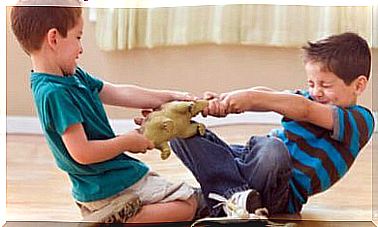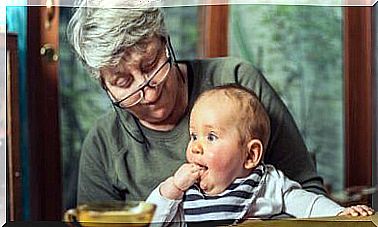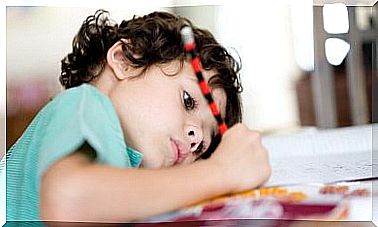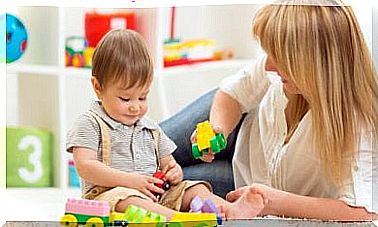Extended Curriculum: Additional Offers In The Classroom

Dedicated areas in the classroom that offer an expanded curriculum are a great and easy way to nurture exceptionally gifted students. You can easily create such an area. Simply choose a specific area in the classroom that you will make available to particularly motivated and talented students for additional activities.
Students who learn particularly quickly and have completed their assignments early can use this area as an additional educational resource. But of course the areas in which an extended curriculum is offered can be used by any student who has the time to visit them.
Characteristics of areas in which an expanded curriculum is offered
Areas where an expanded curriculum is offered are materials and resources that enable students to work independently and creatively. Teachers and professors are responsible for setting up one or more of these areas in the classroom. You can also change and adapt the content offered from time to time.
In addition , educators should rate the different areas based on an analysis of the advantages and disadvantages they observe in using them. The aim of setting up such areas is to better respond to the needs of the students.
This is especially true for those students with high intellectual capacity. It is therefore very important that teachers and professors are willing to make any necessary adjustments to better meet these needs.

The objectives of establishing specific areas in which an expanded curriculum is offered are as follows:
- Increasing the motivation of the students.
- You maximize the research and investigation tasks.
- In addition , creativity is encouraged.
- They also offer the opportunity to offer a wide variety of different activities in the classroom .
- These areas provide a perfect answer to the intellectual needs of the student.
- They expand knowledge about different concepts, procedures and settings.
Extended curriculum: what types are there?
Areas in which an extended curriculum is offered can be divided into two categories:
- Vertical curriculum expansion: This increases the amount of content that children can learn.
- Horizontal curriculum extension. In this case, the amount of content is increased more in the background. Rather, the focus is on students making connections between the various pieces of content they are learning.
In addition, there are many different variations in how educators can set up and design these special areas. In the following we want to give you a few examples.
Examples of vertical curriculum expansion
Envelopes with additional content
This is our first example of a vertical curriculum expansion. The envelopes provide the students with additional information on the topics that the students deal with in regular lessons.
This area consists of different, independent learning areas in the classroom. In addition , these areas contain various envelopes that contain activities designed to increase students’ knowledge of a specific topic.
The aim of this measure is to supplement and expand the regular lessons or the information that is in the school books.
Therefore , the envelopes contain content that relates to the respective lesson topic. This can be news, interesting facts, additional information, etc. In addition, the envelopes are of different colors and have different levels of difficulty.
Creativity folder
Creativity folders are also an example of vertical curriculum expansion. In this case , the educators provide their students with folders that contain a variety of activities. In addition, these activities are also related to the topic that is dealt with in regular school lessons.
The folders allow students to develop different aspects of their creativity. Therefore, this is an excellent way to work with and nurture exceptionally gifted students. As students complete each task in the folder, they develop the following areas and skills:
- autonomy
- imagination
- creativity
- The ability to learn how to learn
- The ability to research and investigate
Examples of horizontal curriculum expansion
Interdisciplinary activities
This is about creating an area in the classroom in which students can carry out interdisciplinary activities. Therefore they have to look for and recognize connections between concepts and procedures from different subjects and learning areas.
The aim of this activity is not to provide students with additional information on a particular topic. Rather, it is about making connections between different subject areas on the same level. In this way, they not only deepen their understanding of one topic, but also several different subject areas at the same time.
It is very important that children learn to make these interdisciplinary connections. When they do that , they get a more global and comprehensive view of the topics and contexts they have learned.

Activities to delve deeper into a topic
The areas in the classroom that offer an expanded curriculum allow children to deepen their understanding of a subject. The activities promote their ability to think on a higher level through the Bloom and Anderson taxonomy.
In other words, children learn from a hierarchy that is divided into different cognitive levels, from simple to complex.
In addition , the children can engage in a range of activities related to a specific topic or area of knowledge. In addition, the activities are allocated after the set goals have been achieved. First the students start memorizing and later they have to get creative themselves.
In this way the children can deepen their knowledge. Hence, these activities are also a great tool for motivating them. In addition, they help students understand that learning is a progressive process.
Final thoughts
In summary, we can say that specific areas in the classroom that offer an expanded curriculum are beneficial for all students. However, these areas are particularly useful for students with strong intellectual abilities. Here they can acquire and develop a deeper, more comprehensive and global understanding of learning.









